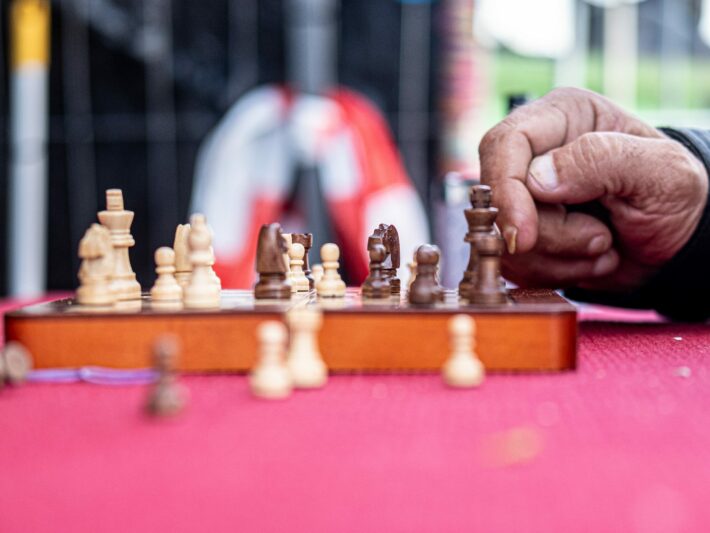In the realm of chess strategy, the Sicilian Defense stands as a mysterious and formidable opening that has captivated the minds of players for generations. With its rich complexity, dynamic pawn structures, and tactical possibilities, mastering the Sicilian Defense is a pursuit that unveils the secrets of strategic thinking and creative counterplay.
This article delves into the enigmatic world of the Sicilian Defense, exploring its key ideas, variations, and the strategic nuances that make it a powerful weapon in the hands of skilled players.
How does the Sicilian Defense influence chess strategy?
The Sicilian Defense has a significant impact on chess strategy, shaping the dynamics and positional characteristics of the game. By allowing Black to fight for control of the center and challenge White’s plans, the Sicilian Defense fosters asymmetrical positions with rich tactical possibilities. This strategic influence extends to various aspects, including pawn structure, piece activity, and long-term planning.
Successful implementation of the Sicilian Defense demands an understanding of the resulting strategic themes, such as exploiting weaknesses in the opponent’s position, creating counterplay, and balancing tactical opportunities with solid positional foundations. Mastering the strategic nuances of the Sicilian Defense opens up a realm of dynamic possibilities and enriches one’s overall chess strategy.
What are the key principles behind the Sicilian Defense?

The Sicilian Defense is built upon several key principles that guide its gameplay. First, Black aims to challenge White’s control of the center by delaying pawn moves in the early stages and instead opting for piece development. Second, Black seeks to exploit tactical opportunities through aggressive counterplay, often targeting weaknesses in White’s pawn structure.
Third, flexibility plays a crucial role, as Black can choose from various Sicilian Defense variations to adapt to different positional scenarios. Lastly, maintaining a dynamic equilibrium between tactical complications and solid positional foundations is vital. By adhering to these principles, players can harness the true potential of the Sicilian Defense.
Which chess openings fall under the Sicilian Defense category?
The Sicilian Defense encompasses a wide range of chess openings, each offering its unique characteristics and strategic possibilities. Some notable variations include the Open Sicilian (Najdorf, Dragon, Scheveningen, etc.), Closed Sicilian (Grand Prix Attack, Closed Variation, etc.), and the Accelerated Dragon.
Additionally, there are various sidelines and sub-variations within each main line of the Sicilian Defense. The diverse options within the Sicilian Defense category provide players with choices that suit their playing style and allow for creative approaches to the game.
What are the advantages and disadvantages of playing the Sicilian Defense?
The Sicilian Defense presents both advantages and disadvantages to players who adopt it. On the positive side, the Sicilian Defense allows Black to challenge White’s central control, leading to asymmetrical positions with tactical possibilities. It offers opportunities for dynamic counterplay, complicating the game and increasing winning chances for both sides.
However, the Sicilian Defense can also be demanding, requiring in-depth theoretical knowledge and understanding of the resulting complex positions. The risks of falling into opening traps and facing aggressive pawn storms from White are factors that players must navigate. Despite the challenges, the Sicilian Defense’s potential for rich and exciting gameplay makes it a popular choice among competitive chess players.
How does the Sicilian Defense affect pawn structure in chess?
The Sicilian Defense has a significant influence on pawn structure due to its aggressive nature and pawn breaks that often occur in the middle and endgame stages. By delaying pawn moves in the opening, Black can shape the pawn structure to their advantage.
The resulting imbalances and pawn breaks, such as …d5 or …e5, can create open lines for pieces, target weaknesses in White’s pawn structure, or launch decisive attacks. The Sicilian Defense’s impact on pawn structure often leads to dynamic positions where careful pawn play and strategic pawn breaks play pivotal roles.
What are the main variations and sub-variations of the Sicilian Defense?
The Sicilian Defense boasts a wide array of variations, each offering distinct characteristics and strategic ideas. Notable main variations include the Open Sicilian (Najdorf, Dragon, Scheveningen, etc.), Closed Sicilian (Grand Prix Attack, Closed Variation, etc.), and the Accelerated Dragon.
Within these main lines, numerous sub-variations exist, such as the Sveshnikov Variation, Taimanov Variation, and Paulsen Variation, to name a few. Each variation presents its unique plans, pawn structures, and tactical patterns, providing players with a diverse range of options to explore and master within the framework of the Sicilian Defense.
How does the Sicilian Defense impact the middle game in chess?
The Sicilian Defense has a profound impact on the middle game, characterized by its tactical nature and dynamic pawn structure. By challenging White’s central control and creating imbalanced positions, the Sicilian Defense sets the stage for sharp tactical skirmishes.
Both sides must navigate the complexities and tactical pitfalls, carefully coordinating piece activity and exploiting weaknesses. The Sicilian Defense’s influence on the middle game often leads to double-edged positions, requiring accurate calculation, positional understanding, and a keen eye for tactical opportunities.
What are the typical tactical and positional themes in the Sicilian Defense?
The Sicilian Defense is renowned for its tactical and positional complexities, offering a wealth of thematic ideas. Tactical motifs such as sacrifices, pinning, skewering, and various tactical combinations frequently arise.
Additionally, typical positional themes include pawn breaks, piece maneuvering, control of key squares, and exploiting weaknesses in the opponent’s pawn structure. Recognizing and leveraging these tactical and positional themes is crucial for successful play in the Sicilian Defense, allowing players to seize opportunities and launch dynamic attacks while maintaining a solid foundation.
How can players effectively prepare against the Sicilian Defense?
Effective preparation against the Sicilian Defense involves a multi-faceted approach. Firstly, understanding the key ideas, strategic nuances, and typical plans in various Sicilian Defense variations is essential. Studying annotated games, analyzing master-level play, and consulting opening literature are valuable resources for building knowledge and familiarity.
Secondly, practicing against strong opponents who employ the Sicilian Defense can help sharpen one’s understanding and fine-tune opening repertoire. Additionally, employing chess engines and databases to explore lines, evaluate positions, and uncover novelties can aid in preparation. By combining theoretical knowledge, practical experience, and analytical tools, players can enhance their preparation against the Sicilian Defense.
How does the Sicilian Defense influence opening theory and analysis?
The Sicilian Defense has had a profound impact on opening theory and analysis in chess. It is rich complexity and extensive variations have spurred extensive research and exploration by players and chess theorists alike. The constant evolution of new ideas, improvements, and novelties within the Sicilian Defense has contributed to a deepening understanding of chess principles and strategies.
As a result, opening theory in the Sicilian Defense continues to evolve, providing players with a vast body of knowledge to study and employ in their games. The influence of the Sicilian Defense on opening theory ensures its enduring relevance in the chess world.
What are the key ideas behind the Open Sicilian and Closed Sicilian variations?

The Open Sicilian and Closed Sicilian are two fundamental branches of the Sicilian Defense, each with distinct strategic ideas and gameplay. The Open Sicilian prioritizes central control, rapid development, and dynamic counterplay. It often involves pawn breaks in the center and wing areas, leading to complex tactical battles and sharp positions.
On the other hand, the Closed Sicilian aims for a more solid and flexible setup, focusing on harmonious piece development and strategic maneuvering. It emphasizes long-term plans, exploiting weaknesses, and gradually building an advantage. Understanding these key ideas is crucial for selecting the appropriate variation within the Open and Closed Sicilian frameworks.
How does the Sicilian Defense adapt to different play styles?
The Sicilian Defense offers flexibility that allows players of different styles to adopt it successfully. For aggressive players, the Sicilian Defense’s tactical possibilities, imbalanced positions, and potential for attacking play make it an ideal choice.
They can unleash aggressive pawn breaks, launch fiery attacks, and seize the initiative. Conversely, more solid and positional players can find success in the Sicilian Defense by focusing on sound pawn structures, piece activity, and strategic maneuvering. By selecting variations that align with their playing style, players can harness the adaptability of the Sicilian Defense and capitalize on its strengths.
What are the main plans and strategies in the Sicilian Defense?
The Sicilian Defense encompasses a range of plans and strategies that depend on the chosen variation. In general, Black aims to challenge White’s central control, develop pieces harmoniously, and target weaknesses in White’s position. Common plans include coordinating attacks against the d4 or e4 pawn, preparing pawn breaks like …d5 or …e5 to open lines for pieces, and utilizing active piece play to generate counterplay.
Long-term strategies often involve exploiting pawn structure imbalances, aiming for favorable endgames, or launching dynamic attacks on the opponent’s king. Familiarity with these plans and strategies is crucial for the successful implementation of the Sicilian Defense.
How does the Sicilian Defense impact piece development and placement?
The Sicilian Defense significantly influences piece development and placement. Black’s delayed pawn moves in the opening allow for rapid piece development, aiming to challenge White’s central control. Knights are often placed on active squares, bishops are deployed to influential diagonals, and rooks are connected and centralized.
The choice of variation within the Sicilian Defense also determines specific piece placements and plans. Whether focusing on aggressive piece activity, harmonious coordination, or strategic maneuvering, the Sicilian Defense’s impact on piece development and placement is key to achieving a strong and harmonious position.
What are the most common traps and pitfalls in the Sicilian Defense?
The Sicilian Defense, like any other opening, has its share of traps and pitfalls that players should be cautious of. One common trap is the Fried Liver Attack, a tactical sequence where White can quickly checkmate an unprepared opponent.
Another trap to watch out for is falling into a positional bind due to overextending the pawn structure or neglecting piece development. Additionally, opening traps like the Morra Gambit or the Siberian Trap can catch unsuspecting players off guard. Recognizing and studying these common traps is essential for avoiding potential pitfalls and gaining an advantage in the Sicilian Defense.
Below is a table that shows the Common Traps and Pitfalls in the Sicilian Defense
| Trap/Pitfall | Description | How to Avoid |
|---|---|---|
| The Fried Liver Attack | A tactical sequence in the Sicilian Defense that can lead to a quick checkmate if not handled correctly. | Be aware of the tactical motifs involved and consider defensive moves like blocking the central pawn or sacrificing material to maintain safety. |
| Overextending the Pawn Structure | Aggressively pushing pawns in the Sicilian Defense without proper preparation can weaken the position and create targets for the opponent. | Exercise caution when advancing pawns and consider the potential weaknesses that may arise as a result. |
| Ignoring Development | Getting too focused on executing a specific plan without considering the importance of piece development can lead to a lagging position. | Prioritize piece development and ensure a harmonious development of all your pieces. |
| Falling into Opening Traps | Various opening traps exist in the Sicilian Defense, such as the Morra Gambit or the Siberian Trap, which can catch unprepared players off guard. | Study common opening traps in the Sicilian Defense and be cautious of potential pitfalls in the early stages of the game. |
| Ignoring the Opponent’s Plans | Failure to consider the opponent’s strategies and counterplay can result in falling for tactical or positional traps. | Stay vigilant, analyze the opponent’s moves and plans, and be ready to adjust your strategy accordingly. |
How does the Sicilian Defense impact the endgame in chess?

The Sicilian Defense’s impact on the endgame stems from its influence on pawn structure and piece activity. Depending on the variation, the Sicilian Defense can lead to pawn imbalances and diverse endgame scenarios. The presence of open lines, active minor pieces, and dynamic pawn structures often result in rich endgame positions with strategic and tactical possibilities.
Successful endgame play in the Sicilian Defense requires an understanding of pawn structure dynamics, piece coordination, and the ability to exploit imbalances. The Sicilian Defense’s impact on the endgame ensures that players must remain vigilant and adaptable throughout all stages of the game.
In my opinion
By delving into the depths of the Sicilian Defense, players unlock a treasure trove of strategic concepts and tactical opportunities. From the aggressive lines of the Open Sicilian to the solid foundations of the Closed Sicilian, the Sicilian Defense challenges players to think dynamically, adapt to varying pawn structures, and unleash creative attacks. Mastering the intricacies of this enigmatic opening not only enhances one’s understanding of chess strategy but also fosters a deeper appreciation for the beauty and complexity of the royal game. Embark on this journey of exploration and unlock the secrets of the Sicilian Defense.




